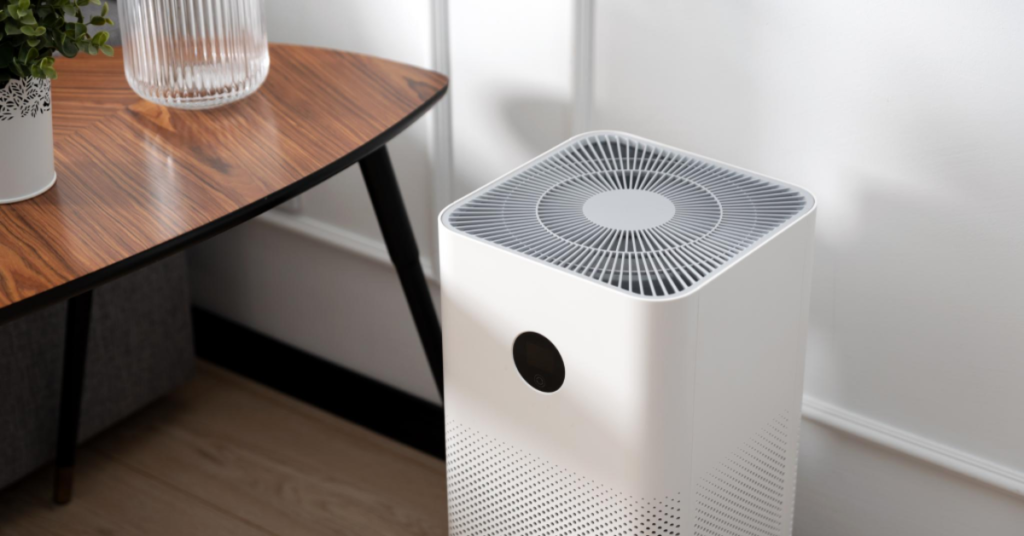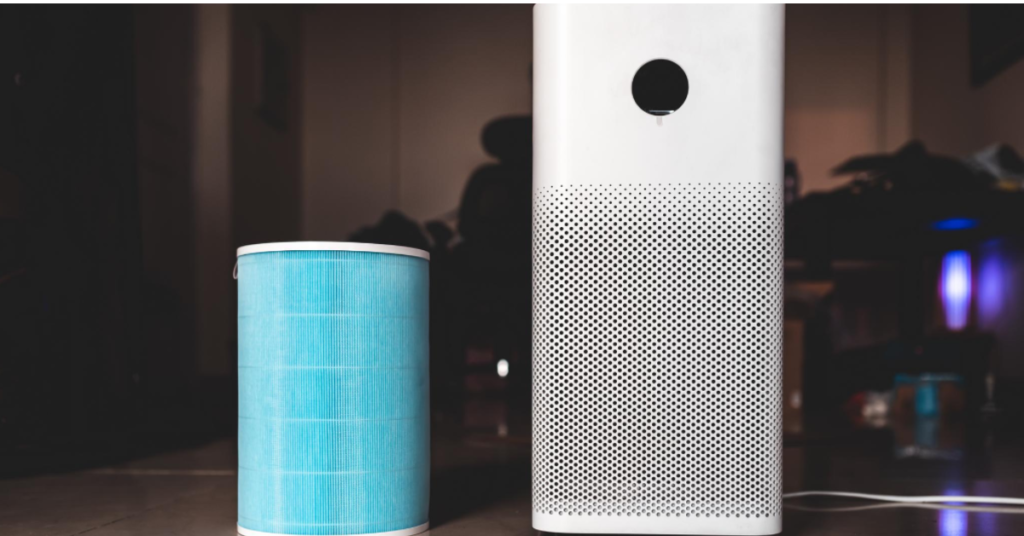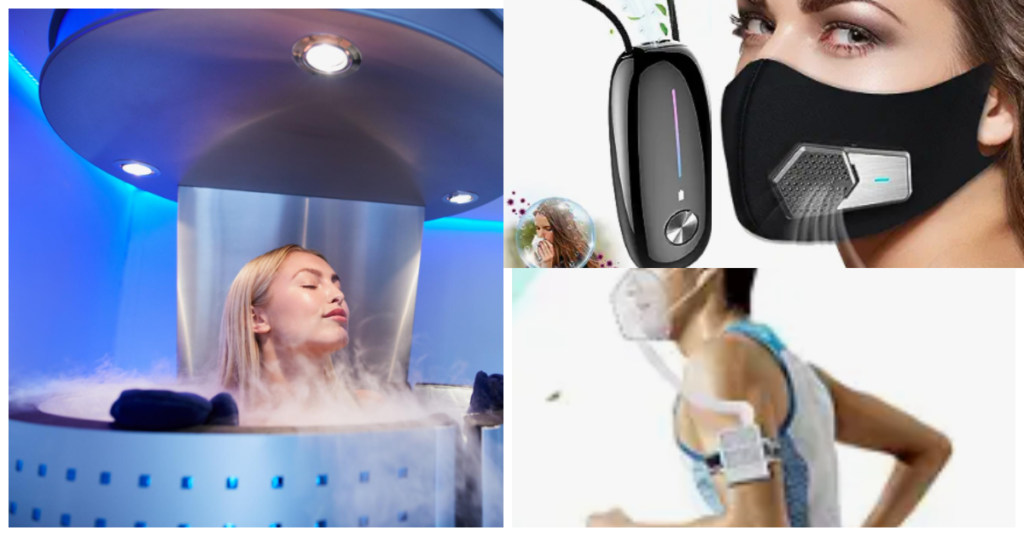“Air Purifier Innovations: A Glimpse into the Future of Clean Air” explores the cutting-edge developments and breakthroughs in the realm of air purifiers. In this article, we navigate through the latest innovations that promise to revolutionize the way we cleanse and enhance the air we breathe. From smart technologies to eco-friendly designs, the future of clean air is undergoing a transformative evolution.
Air purifier innovations are not just limited to removing dust and allergens; they’re rewriting the rules of indoor air quality. In this exploration, we’ll unravel the most recent breakthroughs that are taking air purification far beyond its conventional boundaries. We’ll look at advanced filters and smart devices that watch over the air quality, showing how science is making the air we breathe cleaner and better for our health.
In this glimpse into the future, “Air Purifier Innovations” addresses the growing importance of user-centric designs. From sleek and compact models for urban living to modular systems that cater to specific spaces, the article explores how the aesthetics and usability of air purifiers are evolving. By considering the diverse needs and preferences of users, manufacturers are shaping the next generation of air purifiers to seamlessly integrate into modern lifestyles. As we navigate through these innovations, readers will gain a comprehensive understanding of the exciting developments that promise to define the future landscape of clean air solutions.
Evolution of Air Purification
Following table gives you some air purifier innovations.
| Evolution of Air Purification | Advanced Filtration and Technology |
|---|---|
| HEPA Filters | Exploring the remarkable ability to capture microscopic particles. |
| Activated Carbon Filters | Revealing the prowess of adsorption for odor and gas removal. |
| Electrostatic Filters | Exploring the use of electric fields to capture particles. |
| IoT and AI Integration | Delving into air purifiers connected to the Internet of Things, driven by AI for optimal performance. |
| Photocatalytic Purification | Unveiling the power of light-activated catalysts to break down pollutants. |
| Wearable Air Quality Devices | Implementing wearable gadgets for real-time tracking of personal air quality. |

From above table details we can see air cleaning methods have come a long way. They started with simple filters that could catch big particles. But as pollutants got more complicated, those old methods weren’t enough. Now, we’re always looking for new and better ways to clean the air. We want to make indoor spaces healthier for the way we live today.
Air purification has come a long way in recent years, thanks to the continuous development of technology. The quest for cleaner indoor air has led to remarkable advancements in air purification. Let’s explore the evolution of air purification, with a focus on the Latest Air Purifier Technology, Latest Air Purification Innovations, and Latest Air Purification Technology that have transformed the way we breathe.
In today’s world, staying informed about the Latest News in Air Purification is crucial. We’re witnessing a wave of exciting innovations that promise to make our indoor environments healthier and safer. From cutting-edge filtration systems to state-of-the-art purifiers, these Air Purification Innovations are changing the game.
We have seen different Latest Air Purification Technologies in above table. These technologies are more efficient and effective at removing pollutants and allergens from the air. They offer improved filtration, higher airflow and often come with smart features that provide real-time air quality data. As a result, these innovations have made it possible for us to breathe cleaner air in our homes and workplaces.
Staying updated with the Latest Air Purifier Technology and Latest Air Purification Innovations ensures that we can enjoy better indoor air quality and better health. As technology continues to evolve, we can look forward to even more exciting developments in the field of air purification.
Advanced Filtration Prowess
In this journey, advanced filtration technologies stand tall. High-Efficiency Particulate Air (HEPA) filters are made with lots of tiny fibers that can catch even really small particles, as tiny as 0.3 microns. They catch about 99.97% of those particles. They’re like superheroes against stuff like pollen, dust mites and even tiny viruses.
Then we have Activated carbon filters. These ones don’t just stop particles, they’re great at getting rid of smells and chemicals too. They have a special porous structure that chemically bonds with pollutants, making them awesome at dealing with unpleasant smells and potentially hazardous chemicals.
Electrostatic filters use static electricity to pull in particles. Charged plates attract all sorts of particles from the air. The cool thing is, you can clean and reuse them, eco-friendly alternative to conventional filters.
Hybrid systems are filters that team up different technologies. They’re like the leaders of innovation. These hybrid systems combine HEPA, activated carbon, and ultraviolet (UV) light technologies. They’re like a dream team fighting against all kinds of stuff – particles, gases, and microorganisms.
When it comes to purifying the air we breathe, having an effective filtration system is crucial. Advances in technology have led to the development of Advanced Filtration systems that are smarter and more efficient than ever before.
Advanced Air Filtration systems are designed to capture even the tiniest particles and pollutants in the air. What sets these systems apart is their ability to provide cleaner and healthier indoor air, ensuring that you and your loved ones breathe easier.
Many of these innovations come from companies dedicated to creating cutting-edge solutions for air quality. These Advanced Filtration Companies are at the forefront of air purification technology, pushing the boundaries to provide you with the best possible indoor air quality.
In recent years, we’ve also seen the integration of intelligence into air purifiers. These Smart Air Purifiers not only filter the air but also provide real-time insights into air quality. It’s like having a personal air quality assistant, constantly monitoring and adjusting to ensure you’re breathing the cleanest air possible.
With these advancements in Advanced Filtration and the rise of Smart Air Purifiers, we’re witnessing a new era in air quality. Cleaner and healthier indoor air is no longer a luxury; it’s a reality thanks to these innovative technologies. So, if you’re looking to breathe with confidence, consider the benefits of an Advanced Filtration System for your home or workspace.

Smart Air Purifier innovations : Breathing Intelligence
Thanks to the Internet of Things (IoT), air purifiers are getting super smart. Imagine air purifiers that are like tech wizards. They’re called smart air purifiers and they’re like a mix of convenience and air quality optimization.
These smart purifiers are all about being connected. You can control them from your phone, even when you’re not at home. And guess what? They’re not just basic controls. These purifiers have special apps that help you check the air quality and remind you when it’s time to change the filter.
Air purifiers have come a long way since their inception. Today, we’re witnessing a wave of Air Purifier Innovation that’s making our indoor air cleaner and smarter. The air purifiers of the future, often referred to as Future Air Purifiers or even Futuristic Air Purifiers, are changing the game.
These innovative devices are not just an Air Purifier Invention but a product of extensive Air Purifier Research, backed by scientific studies. The journey to understand and improve air quality has resulted in valuable insights. Researchers have dedicated their efforts to studying the effectiveness of these devices, leading to numerous Air Purifier Research Papers and Research Studies on Air Purifiers.
One significant area of study, especially in recent times, has been the role of air purifiers in combating COVID-19. Hepa Filters COVID Research has provided important information about how air purifiers with HEPA filters can help remove virus particles from the air, contributing to a safer indoor environment.
Behind these innovations are brilliant minds – the Air Purifier Inventors – who have crafted these intelligent devices that not only clean the air but also provide real-time insights into air quality. With the integration of sensors and connectivity, these Smart Air Purifiers monitor air quality and adjust their operation accordingly.
Staying informed about the Research on Air Purifiers and the latest scientific findings ensures that we can make informed decisions about the air we breathe. These smart devices, born from Air Purifier Innovation and powered by research, offer a brighter, cleaner and healthier future for indoor air quality.

Harnessing Light for Purity: Photocatalytic Wonder
Light-activated catalysts, typically comprising substances like titanium dioxide, this technology initiates chemical reactions that disintegrate pollutants. Power of ultraviolet (UV) light breaks down all the bad stuff in the air. It’s like turning them into safe, harmless pieces. This special method is really great at getting rid of things like smelly chemicals, VOC and even tiny germs that can make us sick.
In the quest for cleaner and healthier indoor air, science has uncovered some remarkable innovations. Among these is the Photocatalytic Oxidation Air Purifier, a true wonder of modern technology. This advanced air purification system relies on the power of light to purify the air we breathe.
Another groundbreaking technology making waves is the Bipolar Ionization Air Purifier, which uses charged ions to neutralize harmful pollutants in the air. This method is highly effective at reducing contaminants, leaving you with fresher and cleaner indoor air.
Photohydroionization Air Purification Systems combine the power of light and water vapor to create a highly effective purification process. These systems work diligently to break down pollutants and allergens, providing you with air that’s not just cleaner but also safer to breathe.

Monitoring the Invisible: Personalized Air Quality Insights
As society’s awareness of indoor air quality increases, we’re finding clever ways to keep track of it. Today we have Wearable devices that have tiny sensors that can measure particulate matter levels, volatile organic compounds, humidity, and more, translating invisible threats into actionable insights. With their help, you can know if the air is good or if there’s something you should be careful about.
Certainly! Here’s a section about Monitoring the Invisible: Personalized Air Quality Insights, utilizing the provided keywords with bold emphasis for clarity:
Monitoring the Invisible: Personalized Air Quality Insights
When it comes to ensuring the air you breathe is truly clean and safe, understanding the invisible pollutants is essential. This is where cutting-edge technologies like Air Purifier Ion Technology, PCO Technology Air Purifiers, Bipolar Ionization Air Purification, UVC Air Purifying Systems, UVC Air Purification Systems and UV Disinfection Air Purifiers come into play.
These advanced systems go beyond traditional air purifiers by harnessing the power of ions and ultraviolet (UV) light. Air Purifier Ion Technology and PCO Technology Air Purifiers release charged ions that effectively neutralize harmful particles in the air, making it much cleaner and healthier to breathe.
Additionally, Bipolar Ionization Air Purification and UVC Air Purifying Systems use a combination of technologies to eliminate allergens, viruses, and bacteria from the air. They create an environment where these invisible threats are rendered harmless.
UV Disinfection Air Purifiers take it a step further by using UV light to destroy microorganisms, ensuring that the air you breathe is not just cleaner but also safer.
Embracing a Fresher Tomorrow
As we say goodbye to the old ways of cleaning the air, a world of new ideas opens up. HEPA filters, activated carbon wonders, and smart purifiers redefine our understanding of clean air. Photocatalytic purification harnesses light’s power, while wearable devices enlighten us about our surroundings. It’s like a symphony of science and progress working together to give us the fresh air we really want
As we look ahead to a cleaner and healthier future, several groundbreaking technologies are leading the way. One such innovation is the use of Nanotechnology Air Purifiers or Air Purifier Nanotechnology, which has revolutionized the air purification landscape.
These advanced devices utilize the power of nanotechnology to capture and neutralize even the tiniest particles and pollutants in the air. This means that you can breathe easier and enjoy air that’s fresher and cleaner than ever before.
Additionally, the UV Air Cleaning System has emerged as a powerful ally in the quest for better indoor air quality. This system employs ultraviolet (UV) light to disinfect the air, destroying harmful microorganisms and pathogens.
Wearable Air Filtration System ensures that you have access to clean air wherever you are. These portable devices are designed to provide you with a personal bubble of fresh air, allowing you to embrace a fresher tomorrow no matter where life takes you..
Frequently Asked Questions (FAQ’s):
Are photocatalytic air purifiers safe for health?
Photocatalytic air purifiers are generally safe when used as directed. However, it’s important to avoid direct exposure to the UV light source, as UV light can be harmful to the skin and eyes.
What is the innovation in air purifiers?
Air purifier innovations has brought about smarter and more efficient devices. Some key Air purifier innovations include advanced filtration systems, smart air purifiers that monitor and adjust to air quality, and the use of nanotechnology and UV light to capture and neutralize pollutants. These innovations make modern air purifiers more effective at providing cleaner and healthier indoor air.
What is the future of air purifiers?
The future of air purifiers looks promising. We can expect continued advancements in technology, making air purifiers even more efficient and user-friendly. Personalized air quality insights, nanotechnology, and wearable air filtration systems are likely to become more widespread, ensuring that we all have access to cleaner air wherever we are.
What is the new technology in air purifier?
The newest technologies in air purifiers include nanotechnology for capturing tiny particles, UV air cleaning systems for disinfection, and smart features that monitor and improve air quality in real-time. These technologies represent a significant leap forward in air purification, providing cleaner and safer indoor environments.
What air purifier does NASA use?
NASA uses advanced air purification technology in their spacecraft to ensure the safety and health of astronauts. They often rely on High-Efficiency Particulate Air (HEPA) filters and other specialized systems designed to remove airborne contaminants.
What is the most highly recommended air purifier?
The most highly recommended air purifier can vary depending on individual needs. However, air purifiers from reputable brands like Honeywell, Dyson, Winix and Levoit often receive high praise for their performance and effectiveness. It’s essential to consider your specific requirements, such as room size and air quality concerns, when choosing the best air purifier for you.
Is the air purifier market growing?
Yes, the air purifier market is indeed growing. As people become more conscious of indoor air quality and its impact on health, the demand for air purifiers is on the rise. Continuous advancements in technology and increasing awareness of the benefits of air purifiers are contributing to this growth.
Is there science behind air purifiers?
Yes, there is extensive science behind air purifiers. They operate on principles of filtration, oxidation, and disinfection to remove and neutralize airborne contaminants. Scientific studies and research have consistently demonstrated the effectiveness of air purifiers in improving indoor air quality and reducing the risk of respiratory problems.
What did NASA use the air purifier for?
NASA used air purifiers for critical life support systems in spacecraft. The primary purpose was to ensure a safe and habitable environment for astronauts during space missions. Air purifiers played a crucial role in removing contaminants, such as carbon dioxide and other airborne particles, from the spacecraft’s air supply. This contributed to the overall well-being and health of astronauts by preventing the accumulation of harmful substances and maintaining a clean breathing environment in the confined spaces of the spacecraft. The use of advanced air purification systems was essential to address the unique challenges of maintaining optimal air quality in the microgravity environment of space.
DheerajSonwane is a dedicated writer with expertise in air purification technologies. He focuses on providing well-researched content to help readers improve indoor air quality in homes and businesses. As the lead writer at AirPurifierMaster.com, Dheeraj offers practical advice his insightful reviews guide individuals in choosing the best air purifiers for their needs.


3 thoughts on “Air Purifier Innovations: A Glimpse into the Future of Clean Air”